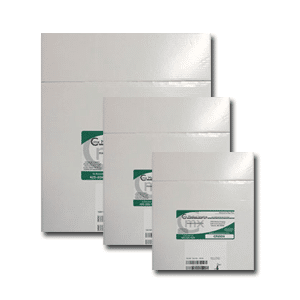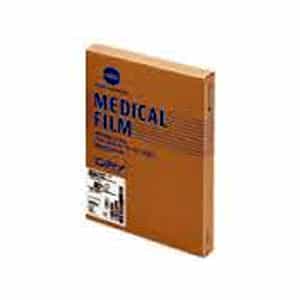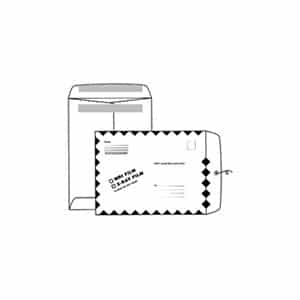Description
100 sheets per box
General Radiography
FOR USE WITH FILM PROCESSORS
Full Speed Orthochromatic Film provides high contrast and excellent detail throughout the entire diagnostic range and rapid processing. This medium speed, high contrast film is compatible with any green-emitting rare-earth intensifying screen. When used with 400-speed green rare-earth screens, images have high clarity, high contrast, and overall image sharpness. When used with 100-speed green rare-earth screens, the film provides outstanding detail in extremity images.
Safelight Requirements
The use of GBX-2 (or equivalent) safelight filter is recommended. The filter should be utilized in conjunction with a 15 watt frosted bulb and positioned at least four feet from the unloading/loading area, and processor feed-tray.
Storage
Unopened, unexposed film should be stored at temperatures at or below 70 degrees F in a dry location, preferably between 30% and 50% relative humidity. Film should be protected from sources of ionizing radiation including x-ray scatter.
Processing
Radiomat Medical X-Ray Films are designed to be processed in automatic processors using “High Throughput”, standard, or extended cycles. When used in the standard 90 second cycle, a temperature of 95 degrees F is recommended. The films can also be processed manually. These robust films perform well in all quality developers and fixers.
Handling
Films should be handled by the edges; avoiding creasing, buckling and physical pressure. Avoid using hand lotions prior to handling films.
This is a general X-Ray film designed for use with green emitting intensifying screens. The system speed of this film has been adapted for specific applications, according to the international guidelines. The toe of the sensitometric curve has a form which provides a high contrast in the low densities of the image. This permits the use of Radiomat film in applications such as angiography, where it gives sharp and detailed images of even the smallest blood vessels as well as of bone structures.
Even the small difference in absorption between soft tissue and air become visible by the varying density levels, thanks to the high contrast which also enhanced by the form of the shoulder of the sensitometric curve. The typical form of the sensitometric curve makes Radiomat film ideal for the imaging of bone structures, allowing even the detection of hairline fractures. The film is also suitable for orthopedics where it will give the fine details of bone structures, yet keeping the soft tissue visible. The film also offers good contrast in the main lung area, with good detail being obtained in the middle density areas. Summarizing, the Radiomat film can be considered as universal film, allowing the user to read necessary information quickly, thank to its high contrast, its low fog and low noise level.



